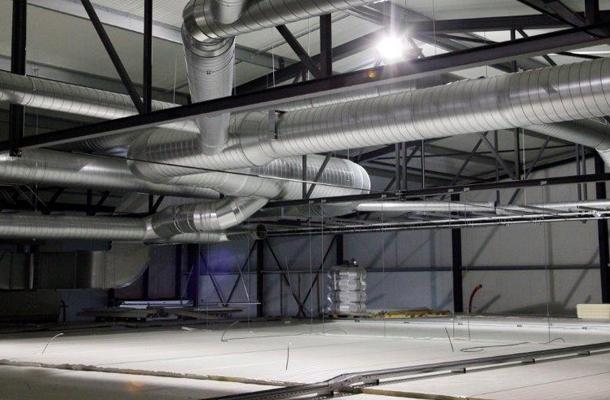Maintaining correct air pressures in the hatchery
Tags: Climate control | Whitepaper
, 10 June 2015

In principle, setters and hatchers can function well in a hatchery with open construction, when air pressure in all the rooms is equal to the air pressure outside. In practice, however, the majority of modern hatcheries are “closed” and equipped with air handling systems to control temperature and relative humidity within optimal ranges, as recommended by the incubator manufacturer. The aim, of course, is to create uniform incubation conditions with minimal energy costs.
There is the risk in a closed hatchery, that not enough oxygen-rich air is brought to the incubators and that “used” air, with high CO2 content, is insufficiently exhausted from the facility. However any potential for mixing fresh and used air is avoided when the hatchery’s inlet and outlet plenums, for both setter and hatchers, are separated.
By maintaining positive air pressure in the inlet plenum, sufficient fresh air for the setters and hatchers is guaranteed, providing the machines are designed to actively draw in the fresh air and do not depend on high air pressure to push the air inside.
Positive pressure in the outlet plenums should be avoided, to allow setters and hatchers to exhale freely. Neutral pressure will suffice, although a light under-pressure is usually preferred. Excessive under-pressure should be avoided, to prevent the risk of overruling the incubator’s own ventilation principle.
Hatchery hygiene is another, equally important reason for maintaining different pressures in different rooms. The clean air plenum for the setters, whether the setter room itself or a separate air plenum above the setter room, should be preserved as the cleanest room in the hatchery, by maintaining over-pressure in relation to ‘dirtier’ rooms, such as the transfer room (bangers) or hatcher rooms (fluff). This ensures that air flows from clean to dirtier rooms and not in the opposite direction.
Likewise, the outlet plenum of the hatchers, often referred to as the “fluff tunnel”, should be kept at slightly negative pressure, to avoid cross-contaminating other rooms in the hatchery with small amounts of air-born fluff from the hatchers. Slight under-pressure allows the fluff to settle on the floor of the plenum, where it can easily be washed into the drain. Too much under-pressure risks sucking the fluff onto the roof, which may then re-enter the hatchery through the air handling unit, with the potential to block filters and contaminate clean air.
Notably, air pressure measurements within the hatchery are +/- from ‘zero’, where zero is the outside pressure. It is therefore important that the probe for reference pressure is located where it will not be affected by wind. Changing wind speeds will have a different effect depending on whether they are measured on the windward or leeward side of the hatchery and fluctuation in external reference pressure will disturb pressure control inside the hatchery. An air filter on the end of the external probe is also recommended, to prevent the probe from becoming blocked by dirt or even insects.
Advice
- Maintain air pressures in the inlet and outlet plenums of setters and hatchers in a ‘closed’ hatchery environment, in accordance with the incubator manufacturer’s recommendations.
- Keep doors closed: this is the only way to maintain the required pressures inside the hatchery. Consider installing automatic sliding doors.
- Ensure that air flows at all times from clean (setter room) to dirtier areas.
- Ensure that external reference air pressure is taken correctly and consistently from a ‘zero’ location with minimal fluctuation.
- Maintain Air Handling Units (air filters!) regularly to guarantee that sufficient fresh air is supplied to all relevant rooms in the hatchery.
Written by Maciej Kolańczyk
Senior Hatchery Specialist
I welcome your feedback on this article - and if you require any additional information, please don't hesitate to contact me.